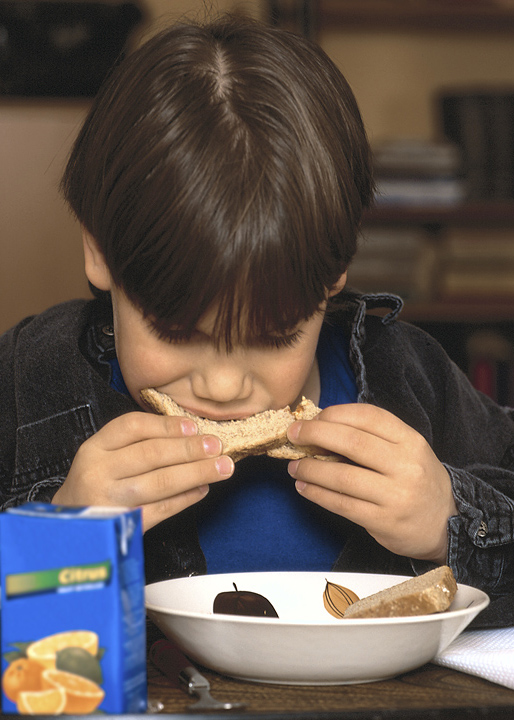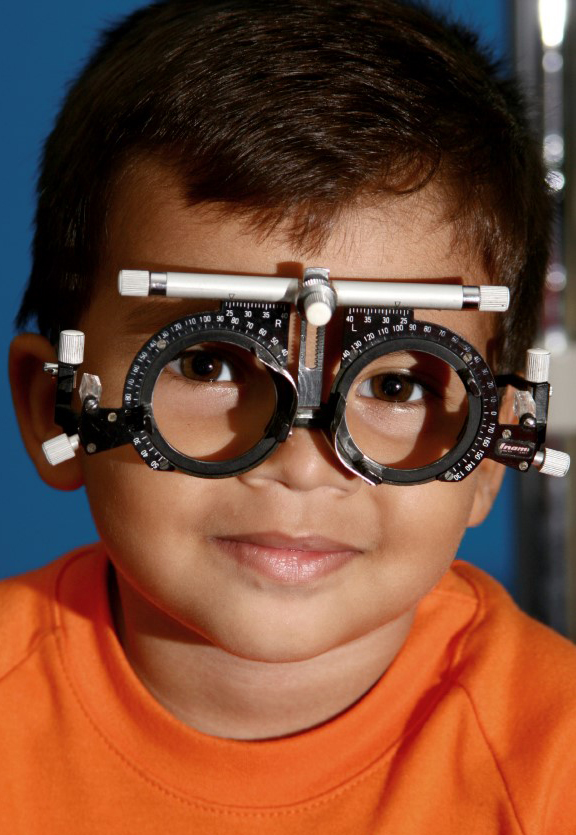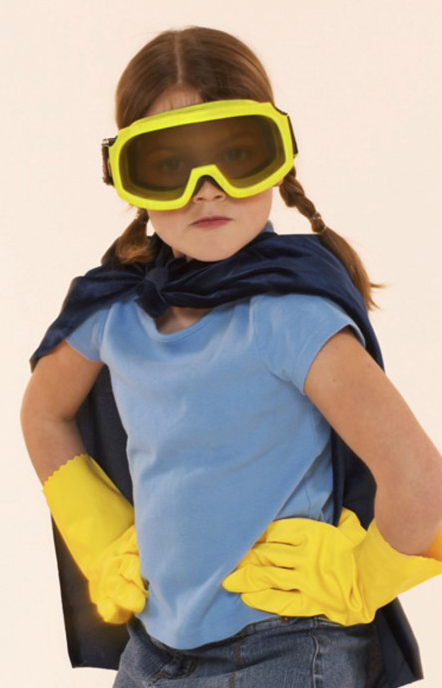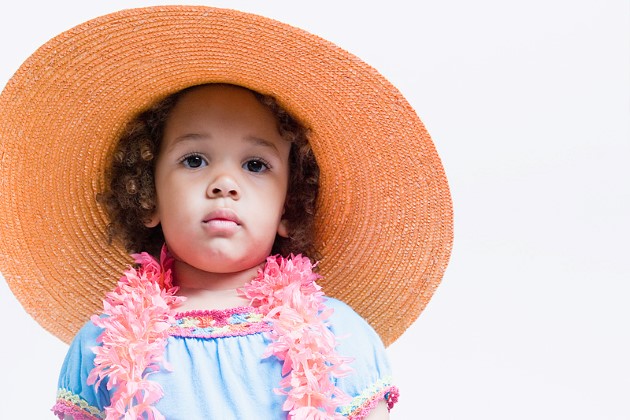Offer orange juice when you serve iron rich food. Your child probably ate iron-fortified baby cereal as an infant. Now he probably eats adult cereal. To find out if a cereal is high in iron, look for the nutrition label on the side of the box and see how much iron each serving of cereal has.
- The amount of iron will be given as a percentage of the U.S. Recommended Dietary Allowances (U.S. RDA).
- Use only those cereals that have at least 25 percent of the U.S. RDA for iron.
- Take your child to a doctor for regular checkups to see if your child is getting all the iron he needs.
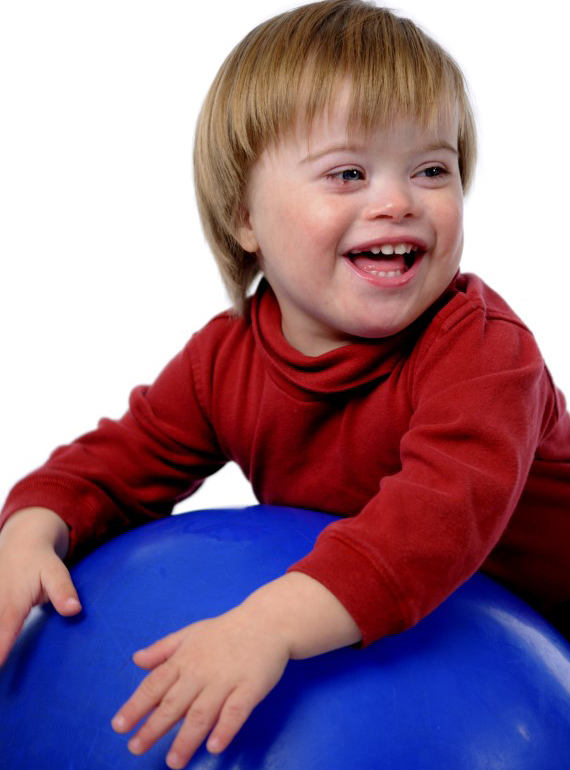
How I Talk
- I am saying more new words every day.
- I am using more words — like happy or mad — to name emotions.
- I am getting better at putting words together correctly.
How I Grow
- I am practicing new skills every day. I am walking, jumping, bending and pedaling.
- I am getting good at running.
- I can balance on one foot.
- My baby teeth are about all in.
How I Understand
- I understand my own feelings.
- I am starting to understand the feelings of others.
- I know at least one color.
Some children do things earlier or later than described here. Most differences are normal. Focus on what your child can do and get excited about each new skill. If you notice that your child is lagging behind in one or more areas for several months, circle the things that your child cannot do. Check the things your child can do. Use this list to talk with your doctor about your child’s development.

Children love to learn about themselves. It helps them feel important and special.
You have some memory makings already. You can use photos, birthday cards, certificates, and so forth to start a memory book or box. Add pictures your child draws, a piece of her favorite blanket, an outline of her hand or footprint, her holiday cards, newspapers published on her birthdays, notes from favorite relatives — and anything else you and she want to save.
Let your child know this is a special book or box you want to keep for both of you. Let her only look at it with you so you can keep it from getting torn and dirty. All too soon, these early years pass. A memory book or box will help you and your child remember these special years.
If you teach healthy eating and exercise habits, they can last a lifetime.
- Provide a balanced diet from all the food groups: meat/beans, bread/grains, milk and fruits/vegetables. Most toddlers need about 3 meals and 2 healthy snacks each day.
- Let your toddler decide how much to eat. Toddlers need smaller portions than adults.
- Toddlers can serve themselves. They are better at choosing the right amount of food.
- Do not force your toddler to eat. This can cause your toddler to eat too much.
- Do not bribe your toddler with treats for eating healthy foods. This teaches him to dislike the healthy food.
- Make meal and snack times relaxed. Sit and talk with your toddler while eating.
- Let your toddler see you eating healthy foods. He learns from you.
- Exercise daily. Make sure your toddler gets plenty of time to be active. Most toddlers need about 2 hours of active time each day. You can find ideas for physical activity here.

As your child grows, he will encounter more and more situations that cause stress. It is not too early to help him learn to recognize and manage stress. Show your child how to relax by sitting quietly and paying attention to his breathing.
- Most children like to use their imaginations. Encourage your toddler to think about something calm and pleasant —like soft rain, a sleeping kitten, a warm blanket.
- Help him picture a place he especially likes —a park or a beach, and tell him to think about that place.
- Suggest he can go to that place in his mind when he is upset.
By teaching your child to relax, you’ll be giving him a skill that will help him all his life. Try some of these ideas yourself — they work for everybody.
Some people go through life solving problems well. Others go through life solving them poorly. Very young children are learning how to solve problems and developing their own style of problem solving. Whether they learn to solve problems well or not so well depends largely on the help and encouragement they get as toddlers.
- Every day, toddlers face problems and have a chance to practice solving them. For example, suppose Jimmy and Julie are building block houses, but neither has enough blocks to finish. You could suggest how they can solve this problem, but it is better if you help them learn to figure out how to solve the problem themselves.
- Describe what you see. You can say that they both want to finish their houses and neither has enough blocks. Then you can ask them for ideas on how they might solve the problem.
In doing this, you do two important things. You show them that you expect them to be able to solve problems, and give them a chance to practice doing so. At first, you might need to help them come up with ideas. Later, they’ll be able to do more problem solving on their own.
Most children learn to use the toilet regularly between the age of 2 and 3. But it is common to hit some bumps in the road as they learn. Sometimes toddlers, who have been using the bathroom regularly for some time, lose interest. They may go back to wearing training pants for weeks before going back to using the toilet.
These kinds of slips are common. Throughout development, children learn new skills. They may spend many months developing a new skill. Then, once they have learned it, they leave it behind and start learning other new things. This can happen with potty training. Don’t overreact to these slips.
There can be many reasons for toddlers going back to not using the toilet:
- She doesn’t want to stop playing —especially if there are other children present.
- There has been a major change to her routine —like starting a new preschool or having a new baby in the family.
- She forgets to take toilet breaks until it is too late.
- She is stressed about a disruption in her life —such as divorce or moving to a new house.
Stay calm and remind your toddler to use the toilet when she feels she needs to go. Making her feel guilty for the slips may make her feel more stress —which can slow down progress. Remind her to remember to take breaks from playing to use the toilet.
